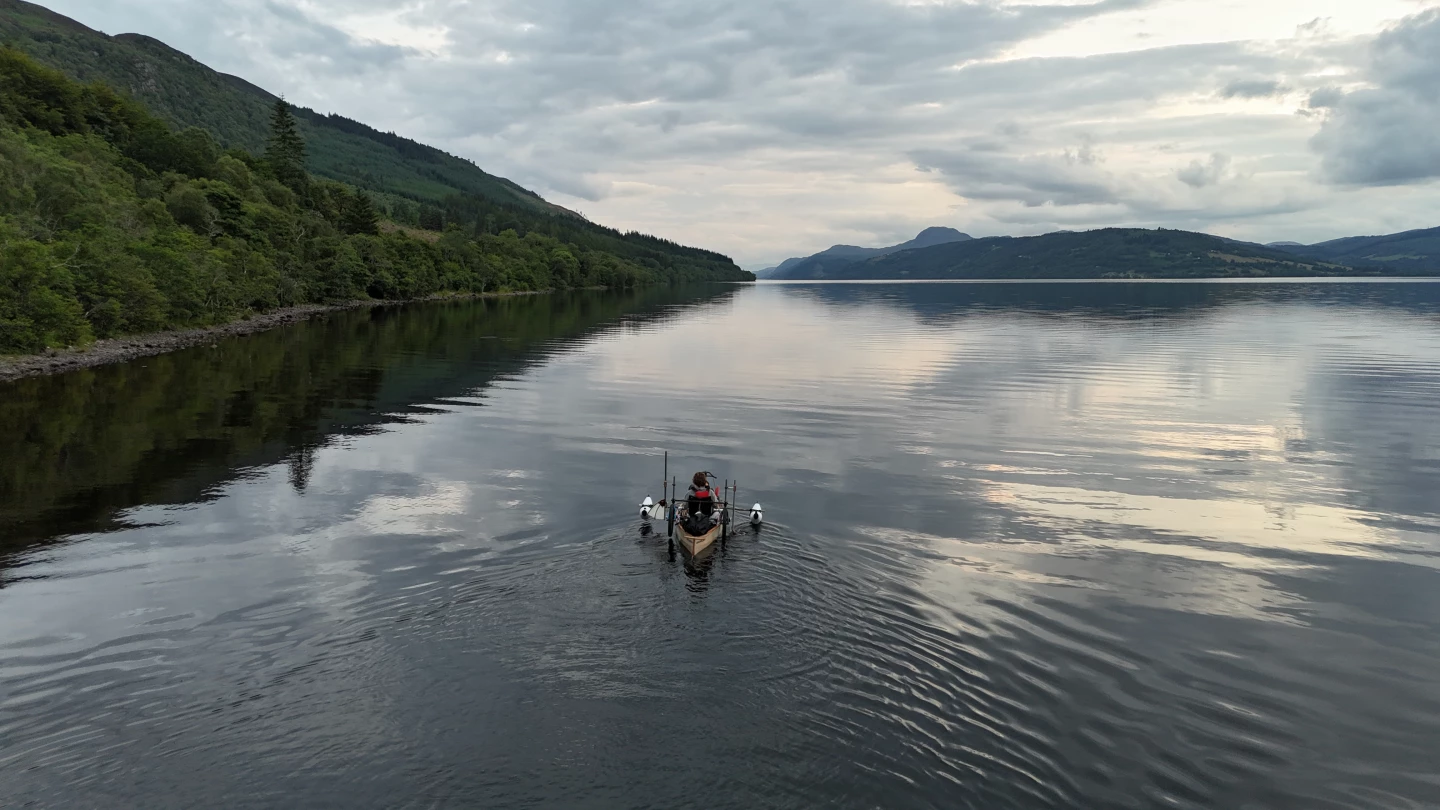Traversing the width of Scotland in a canoe would be a challenge in and of itself, as would traversing it on a recumbent tricycle. Well, British adventurer Ben Kilner recently canoed the trip in one direction then triked it in the other, using the same amphibious vehicle for both legs of the journey.
Kilner first came to our attention in 2022, when he used a homebuilt canoe to travel from the navigable source of the River Thames to its outlet into the North Sea.
That watercraft utilized an ingenious pedal-propulsion drivetrain that he invented, in which one bicycle crankset in the front of the boat was linked (via a chain drive) to another crankset in the rear. As Ben pedaled the one in front, it caused the set in the rear to also rotate. And as that rear crankset rotated, it drew two pedal-mounted paddles through the water.

Those paddles both looked and behaved like a pair of duck's feet alternately dipping in and out of the water, and they proved to be a very effective means of propulsion. In fact, Kilner subsequently utilized the same drivetrain in a pedal-powered paddleboard that could be converted into a bicycle and trailer for traveling on roads.
That brings us to his latest amphibious creation, which sports both wheels and duck-foot-like paddles. It's called the Wee Hen.

Earlier this year, Ben started by water-pedaling the craft from Fort William on the west coast of Scotland to Inverness on the east coast. He followed the Great Glen Canoe Trail, which consists of about 60 miles (97 km) of linked canals and lochs. Upon reaching Inverness, he turned around and land-pedaled back to Fort William along the 78-mile (126-km) Great Glen Way trail.
The whole out-and-back trip took him 10 days, although that included two and a half days spent making repairs. He camped at night and prepared his own meals, utilizing gear that brought the combined vehicle/cargo weight up to about 100 kg (220 lb).

The Wee Hen consists of a wooden-frame/nylon-skin canoe that Kilner built himself from a set of plans, which is combined with a tricycle platform that he made largely out of BMX and go-cart parts. The duck-feet-paddles setup returns once again, although this time the paddles are on either side of the boat instead of in the rear.
In order to keep things (sort of) simple, the 24-speed drivetrain defaults to turning the back wheels and the paddle-turning mechanism at the same time, regardless of whether the Wee Hen is on the road or the water. The paddles themselves can be disconnected.

Given the fact that the spinning wheels splash a lot in the water, Ben often just pulled the chain off the wheel-drive part of the system in order to temporarily disable it. That said, he states that the centrifugal force produced by the spinning wheels did boost stability … and he really needed more stability on the water.
"The ride height is high," Kilner tells us. "You're constantly balancing away on this thing. Even with the slightest bit of swell, it becomes unmanageable […] I didn't capsize, but came so, so close."

Adding outriggers helped with the stability issue, but that wasn't the only challenge he faced. Climbing hilly trails in "land mode" was also quite difficult, especially on a very steep, rocky stretch just outside of Inverness on the way back.
"Pretty much everyone I spoke to said, 'You can't go that way,' and so I went that way," Kilner recalls. "I got to very nearly the top, when one of the mid-drivetrain chains popped off. I didn't have my hands on the brakes, so I just went shooting back down the hill. I managed to swing it around, and spun off into a field."

That incident stretched the chain to the point that it was unusable, meaning that Ben had to pull the Wee Hen the rest of the way up the hill – a distance of about 200 meters (656 ft).
When subsequently replacing the chain, he discovered that one of the sprockets had also been bent beyond repair. After an appeal to his Instagram followers in the region, a replacement was ordered off Amazon and delivered to his campsite within 24 hours.

Along with simply being a great adventure, Kilner's cross-Scotland trip was also a fundraising effort for A Leg to Stand On, which is a non-profit group that provides prosthetic limbs and other mobility aids to children in developing countries. Via his sponsors, Ben raised a total of £3,788 (about US$4,899) for the charity.
The journey was additionally a hardcore field test for the Wee Hen design, which Kilner now plans to improve and make seaworthy. Ben will even build the things to order, should you like what you've seen … and many people do indeed seem to like it.
"I think the overriding response has been, 'This is just a fantastic contraption,'" he tells us.
The entire concept-to-completion process is covered in four videos on Kilner's YouTube channel. You can also see the Wee Hen in duck-paddling action right here, in the video below.
Personal website: Ben Kilner










